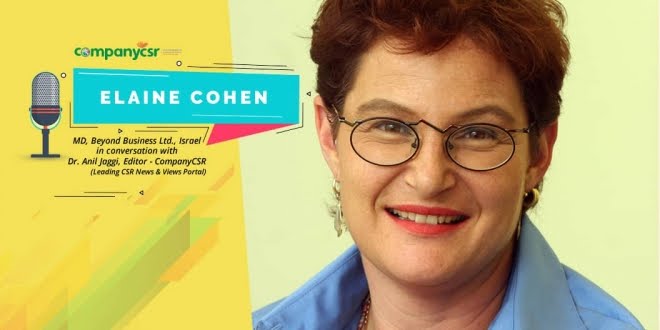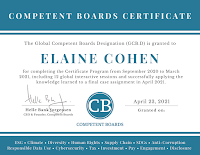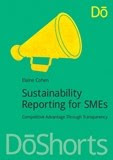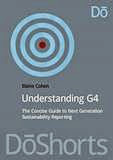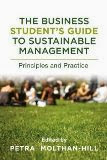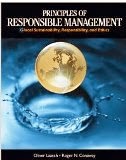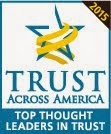There is something about a captive audience. They have limited choice. Where they are is what they experience. Take for example, travel. During that last few months, I have taken several flights and stayed in several hotels. Although many airlines and hotel chains publish CSR Reports, I have rarely found one in the pocket of an airline seat or on the table in my hotel room. And yet, what better a place to put a CSR Report? I almost never take a flight without skimming through the airline booklet in the seat pocket. I almost never stay in a hotel without taking a look at the magazines they leave on the table or desk in the room.
It is not necessary to print a full report. Often, there is room to add a short reference to your sustainability approach and link to your report on or in materials which are already printed, or where there is empty space (the inside cover of your Hotel Services booklet, for example). Alternatively, a postcard or small flyer highlighting some sustainability achievements and a link to the report could be enough to catch the attention of some of the captive audiences that are just sitting ducks, ready to absorb your sustainability message. This is about taking your report to where your stakeholders are and not expecting them to come and seek it out.
Therefore, for the benefit of all those companies that could enjoy millions of additional stakeholder touchpoint opportunities every day and new outreach possibilities to engage stakeholders to advance awareness of their sustainability approach, and improve their reputation, here are 75 places to strategically place a CSR Report and get it noticed:
In the local hair salon (hair products manufacturers)
In the doctor's waiting room (pharma and healthcare companies)
In the dentist's waiting room (pharma and healthcare companies)
On the passenger seat of newly purchased cars
In the box that encases your new laptop
In your new game of Scrabble (toy manufacturers)
Inside the box of the new watch you just bought
On the inside cover of all printed books (publishers)
Inside each wagon on the train
In every box of chocolates
Inside new picture frames (instead of that stock smiling woman photo)
Inside every box of home-assembly furniture from home furnishing retailers
Inside every boot from outdoor sports companies
Printed on the outer packaging of a six-pack of beer
At the ticket office of a football stadium
On your website (you'd be surprised)
In the Board Room (you'd be even more surprised)
As the default alignment printing page for all new printers
On cinema seats
In different parts of university campuses
In airport restrooms
On the tables in cafes and restaurants
On company dining room napkins
On the back seats of taxis
On plasmas in furniture showrooms
On the inside of cereal boxes
Inside new computer travel bags
On the seats at the opera
On the inside of wrappers of chocolate bars and snacks
On the underside of yogurt tops
On the back of company envelopes
On the back of printed payslips
On the packaging of 25kg dog food bags
As a newspaper insert
As a standard email signature for all employees
On the inside of doors of public toilets
On the labels of garments
On the saddles of horses
In the spa reading room
On the reading tables at the local library
In the students careers room on campus
On the back of a CD-rom or music disc
In swimming pool changing rooms
In hotel restrooms
At any visitors' center
At the unemployment office
On the notice-board at local community centers
On the back of bus, train and flight tickets
On pews at the local church or seats at the synagogue
On the tops of cans of soup or other preserves
On the back of bank statements
On the back of healthcare prescriptions
On the back of printed supermarket checkout bills
In mobile phone service centers
On the packaging of automotive components
On tables at the local barn dance
On bottles or cartons of milk
Preloaded onto every portable flash drive or disc-on-key
On every Duty Free buy-four-get-one-free printed flyer
In electronic appliances' printed user guides
On the carousel at the local fairground
In the ski-lift cable car
On the underside of surfboards
Printed on re-usable shopping bags
On the back of museum entry tickets
On the inside of T-Shirts
On toilet paper and napkins
On the inside lids of cosmetic creams
On the walls of prison cells
On the inside of energy bar wrappers
On the back of conference name tags
On the inside doors of personal lockers at sports centers
Inside safety-deposit boxes
Inside new suitcases or briefcases
On the back of lottery tickets
Some of this might sound a little far-fetched... and some of my suggestions are of course a little tongue-in-cheek .. but most of them are actually places or locations which are dead space and where a small reference to a CSR or Sustainability Report could easily be printed and may catch attention. Just think, if every time you bought a new electronic appliance, the packaging and user manual included a few highlights from your Sustainability Report and a link to the online report or download. Maybe a few of you might take the trouble to have a look at your next session on the computer or tablet? More importantly, when you are sitting for minutes or hours in a doctor's, dentist's or hospital waiting room somewhere, instead of picking up the latest copy of Vogue or today's newspaper, you might just be drawn to read about a pharma or healthcare company's impacts on society. When you are on a plane, train or a long bus ride, might you not pick up a small booklet describing the transport provider's CSR efforts?
Publishing your Sustainability Report is not enough. Getting it to your stakeholders, wherever they are, is the key. Even then, they may choose not to take an interest. But at least that's a choice. If they don't know, they can't choose.
Here's to a Happy 2013 - the Year of the Ubiquitous Sustainability Report!
elaine cohen, CSR consultant, winning (CRRA'12) Sustainability Reporter, HR Professional, Ice Cream Addict. Author of CSR for HR: A necessary partnership for advancing responsible business practices Contact me via www.twitter.com/elainecohen on Twitter or via my business website www.b-yond.biz (Beyond Business Ltd, an inspired CSR consulting and Sustainability Reporting firm)



















